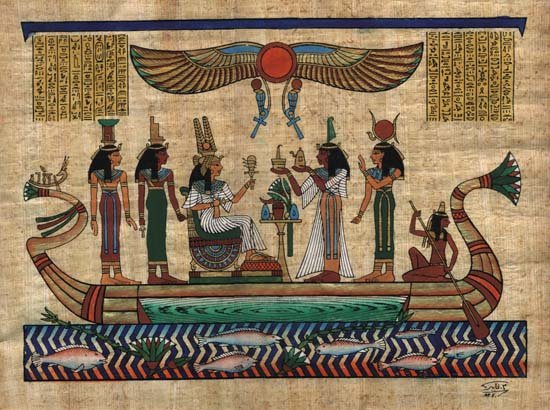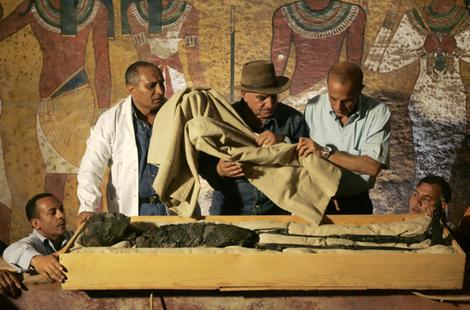COURSE OUTLINE
| Instructor: |
Dr. Ewa Wasilewska, Associate Professor/Lecturer, Dept. of Anthropology, Middle East Center |
Contact information: |
Office: Stewart 101. By
appointment only.
Office phone: 801-581-6251. Please call between 8:00 a.m. and 5:00 p.m. and leave your name and a phone number so the instructor can call you back. Telephone appointments are acceptable.
Home phone: 801-596-3105. For emergencies only unless a telephone appointment is arranged.
Email: Mruczek@AOL.com
|
Time: |
Tuesdays 2:00 -- 5:00 p.m. |
Location: |
LCB 219 |
Course description: |
This course is designed as an analytical survey of major events and discoveries in Egypt through studying archaeological evidence and available textual sources. The focus of this course is on the Neolithic, Predynastic and Pharaonic Periods (from ca. 5500 B.C. to 332 B.C.) in the Nile Valley although numerous references will be made to the surrounding areas of Nubia and Libya, which played an important role in the development of a distinct Egyptian culture, as well as to other Near Eastern civilizations Egypt was in contact with. Variety of archaeological issues will be discussed with focus on the specifics of the ancient Egyptian culture such as its topographical and linguistic isolation, “obsession” with the After-Life, seasonality, etc.
Each meeting will be dedicated to a specific set of issues discussed in a chronological order. Relevant case studies will be selected for each topic to provide students with the framework to study and understand practical applications of theoretical implications.
|
Disclaimer |
Some of the writings, lectures, films, or presentations in this course may include material that conflicts with the core beliefs of some students. Please review the syllabus carefully to see if the course is one that you are committed to taking. |
Teaching and Learning Methods |
This course is a combination of lectures and discussions. While each meeting will be illustrated with various visual aids, students will also be given a list of specific movies to browse through to better comprehend the discussed topics. While students are encouraged to initiate and participate in all discussions, they must remain respectful of all classmates and the professor. |
Evaluation Methods |
This course requires patience and a fair amount of memorization due to the expansiveness of the area and mélange of its people. Students are expected to:
-
Attend class meetings.
-
Do their readings in advance so they can fully participate in any discussions.
-
Take all required exams on time. Upon a valid request, special arrangements might be made with the professor (e.g., a different exam date).
-
Complete and turn in on time their assignments and/or papers.
-
Offer their opinions and argue their points. All must be done in good and edited English.
-
NO PLAGIARISM OR CHEATING IN ANY SHAPE OR FORM (see below: “Academic Misconduct”).
|
Exams, Assignments and Grades: |
In addition to three (3) regular in-class exams each student will have to prepare a project report/paper. Each exam/assignment will be worth 25%.
In addition to the undergraduate requirements graduate students will also be required to prepare outlines for three discussion sessions that they will be in charge of. Each discussion will be worth 10% of the grade, each exam – 15% and a final report will be counted for 25% of the final grade.
There won’t be any extra-credit assignments in this class. Each exam and/or assignment and/or paper will be graded using the Letter-Grade scale (“A” as the highest, “E” as the lowest [no-pass] grade). The final grade will be calculated accordingly by setting up values of the Letter-Grade scale using the 4-Point scale. |
Required Readings: |
All required articles, chapters from different books, etc., are listed under specific topics discussed during the semester. All of them are available at Marriott Library Reserve Desk through electronic reserve or as hard copies.
Suggestion:
Students may want to purchase a book by Kathryn A. Bard entitled An Introduction to the Archaeology of Ancient Egypt (Blackwell Publishing. 2008) instead of using big parts of this book on electronic and hard copies reserve.
|

MEETING
# 1 - August 24, 2010
Introduction.
Terminology and geography, Egyptian archaeology, Egyptology, and Egyptomania. "Exploration:" ten tombs per day or one tomb per ten years.
Discussion: Indiana Jones vs. modern archaeological methods and theory.
Readings for Meeting # 1:
Brewer, Douglas J. and Emily Teeter: 2. The River, Valley and Desert. In Egypt and the Egyptians. Cambridge University Press. 2007. Pp. 17-29.
Redford, Donald B.: History and Egyptology. In Egyptology Today. Richard H. Wilkinson, ed. Cambridge University Press. 2008. Pp. 23-35.
Weeks, Kent R.: Archaeology and Egyptology. In Egyptology Today. Richard H. Wilkinson, ed. Cambridge University Press. 2008. Pp. 7-22.
|
|
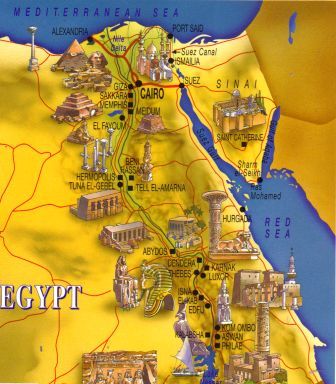 |
| |
|
|
MEETING
# 2 - August 31, 2010
The mystery of the Egyptian farmers.
Re-defining food-gathering and food-producing economies along the River Nile: How late is too late to be a part of the so-called Neolithic Revolution? Saharan Neolithic vs. Neolithic in the Nile Valley.
Discussion: Environmental archaeology and environment in archaeology.
Readings for Meeting # 2:
Bard, Kathryn A.: Chapter 3: The Environmental Background to Pharaonic Civilization. Geography, Environment, Agriculture, and Natural Resources. In An Introduction to the Archaeology of Ancient Egypt. Blackwell Publishing. 2008. Pp. 45-65.
Bard, Kathryn A.: Neolithic. In An Introduction to the Archaeology of Ancient Egypt. Blackwell Publishing. 2008. Pp. 80-88.
Brewer, Douglas J.: Chapter 5. The Neolithic: An agricultural revolution and new way of life (pp. 61-71). 6. The Predynastic Period: Egypt in its infancy (pp.72-108). In Ancient Egypt. Foundations of Civilization. Pearson Longman. 2005.
|
|
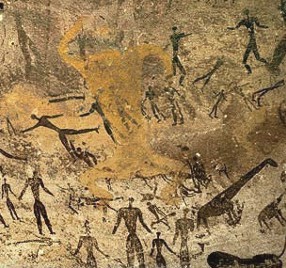 |
MEETING # 3 -- September 7, 2010
How old is the Sphinx?
Measuring time in ancient Egypt: civil and solar calendars, king lists and the Amarna letters. Chronology of Pharaonic Egypt.
Discussion: Dating methods in archaeology: relative vs. absolute chronologies.
Readings for Meeting #3:
Bard, Kathryn A.: 2.9: The Egyptian Civil Calendar, King Lists, and Calculation of Pharaonic Chronology. In An Introduction to the Archaeology of Ancient Egypt. Blackwell Publishing. 2008. Pp. 38-44.
Weininger, Richard: The Nile, the Moon and Syrius: The Ancient Egyptian Calendar. In Tour Egypt Monthly. 2001. Vol. 2:3. http://www.touregypt.net/magazine/mag03012001/magf1.htm
Chronology of Ancient Egypt: Towards a unified chronology. A new chronology. Etc. http://www.egyptologyonline.com/a_unified_chronology.htm
Theban Mapping Project: Timeline. http://www.thebanmappingproject.com/resources/timeline.html? |
|
 |
MEETING # 4 -- September 14, 2010
Who were the ancient Egyptians?
Peoples and languages. Origin and development of the Egyptian writing: a borrowing or a native invention? Texts, scripts and the media. Divine economy and divine writing.
Discussion: Historical archaeology: use and abuse of ancient texts.
Readings for Meeting #4:
Allen, James P.: The Egyptian Language. In Egyptology Today. Richard H. Wilkinson, ed. Cambridge University Press. 2008. Pp. 189-205.
Baines, John: The Earliest Egyptian Writing: Development, Context, Purpose. In The First Writing. Script Invention as History and Process. Stephen D. Houston, ed. Cambridge University Press. 2004. Pp. 150-189.
Foster, John L. and Ann L. Foster: Ancient Egyptian Literature. In Egyptology Today. Richard H. Wilkinson, ed. Cambridge University Press. 2008. Pp. 206-229. |
|
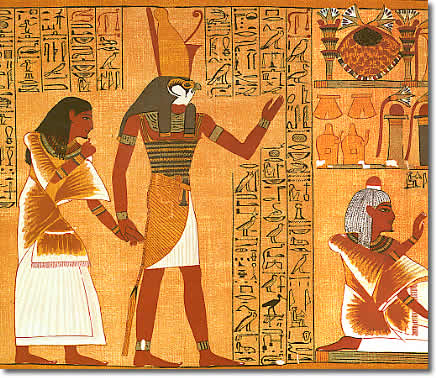 |
| |
|
|
MEETING
# 5 - September 21, 2010
MEETING
# 6 - September 28, 2010
And to the Afterlife they’ve gone… (Part 1).
How much do we really know about ancient Egyptian religion? The world of the sacred vs profane: or was there anything profane? Polytheism, henotheism and monotheism. Mummification and Egyptian tombs.
Discussion: Archaeology of Myth and Ritual. Archaeology of death.
Readings for meetings #6 and #7:
Dijk, Jacobus Van: Retainer Sacrifice in Egypt and in Nubia. In The Strange World of Human Sacrifice. Jan N. Bremmer, ed. Peeters: Leuven. 2007. Pp. 135-155.
Dunand, Françoise and Christiane Zivie-Coche: Book I. Pharaonic Egypt. In Gods and Men in Egypt. 3000 B.C.E. to 395 C.E. Cornell University Press: Ithaca and London. 2004. Pp. 5-191.
Dunand, Françoise & Roger Lichtenberg: Introduction. Chapter 1: From Prehistory to the First Two Dynasties. Chapter 2: The Old Kingdom. Chapter 3: The Middle Kingdom. Chapter 4: The New Kingdom. Chapter 6: The Passage from This Life to the Next. Chapter 8: Animal Mummies. In “Mummies and Death in Egypt.” Cornell University Press. 2006. Pp.1-58. Pp. 94 -122.
Velde, Herman te: Human Sacrifice in Ancient Egypt. In The Strange World of Human Sacrifice. Jan N. Bremmer, ed. Peeters: Leuven. 2007. Pp. 127-134.
Theban Mapping Project: http://www.thebanmappingproject.com
|
|
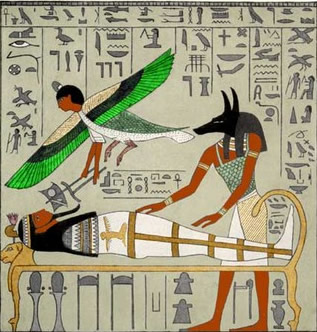 |
MEETING
# 7 - October 5, 2010
And to the Afterlife they’ve gone… (Part 2).
How much do we really know about ancient Egyptian religion? The world of the sacred vs profane: or was there anything profane? Polytheism, henotheism and monotheism. Mummification and Egyptian tombs.
Discussion: Archaeology of Myth and Ritual. Archaeology of death.
Readings for Meeting #7 – see #6 above. |
|
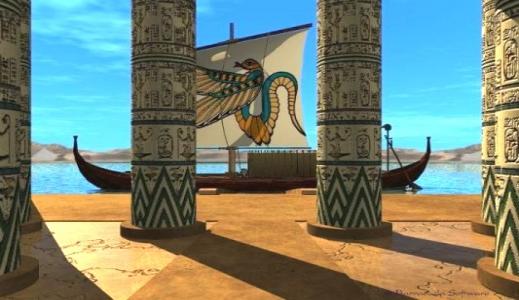 |
MEETING
# 8 - October 12, 2010
FALL BREAK!!!

MEETING
# 9 - October 19, 2010
The sacredness of a ruler and his fall from grace.
Kingship, kinship or divine intervention? From a great god to a foreigner… the rights to the Egyptian throne and power struggles.
Readings for Meeting # 9:
Brewer Douglas, J. and Emily Teeter: 5. The Government and the Governed. In Egypt and the Egyptians. Cambridge University Press. 2007. Pp. 79-97.
Quirke, Stephen: 3. Preserving the Universe. In Ancient Egyptian Religion. Dover Publications, Inc.: New York. 1997. Pp. 70-104.
Wilkinson, Toby A. H.: Chapter 6. Kingship. In Early Dynastic Egypt. Routledge: London & New York. 2000. Pp.183-229. |
|
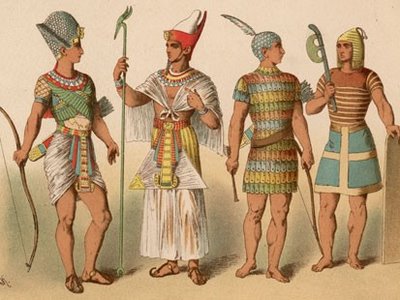
|
MEETING
# 10 - October 26, 2010
Of bureaucracy and its excess…
Management and labor. Is a hangover a good excuse to miss work? Did slaves build the pyramids? Policy of entitlements and the funds to pay for it.
Discussion: Social archaeology. Self-identification and its economic foundations.
Readings for Meeting # 10:
Bard, Kathryn A.: 6. The Old Kingdom and the First Intermediate Period. In An Introduction to the Archaeology of Ancient Egypt. Blackwell Publishing. 2008. Pp. 121-166.
Dodson, Aidan & Salima Ikram: Chapter 3. Construction and Decoration (pp.31-54). Chapter 7. The Old Kingdom (pp. 142-185). In The Tomb in Ancient Egypt. Royal and Private Sepulchres from the Early Dynastic Period to the Romans. Thames & Hudson. 2008. |
|
 |
MEETING
# 11 - November 2, 2010
MEETING
# 12 - November 9, 2010
A civilization without cities…
Pyramid towns, Nubian forts, and workers’ villages. Cities of the dead and the divine vs villages of the living.
Discussion: Archaeology of urbanism. What defines a community?
Readings for Meeting # 12:
Bard, Kathryn A.: 7. The Middle Kingdom and the Second Intermediate Period. In An Introduction to the Archaeology of Ancient Egypt. Blackwell Publishing. 2008. Pp. 167-206.
Gates, Charles: Chapter 6. Egyptian cities, temples, and tombs of the second millennium B.C. In Ancient Cities. The Archaeology of Urban Life in the Ancient near East and Egypt, Greece, and Rome. Routledge: London. Pp. 99-119.
Redford, Donald B.: The Ancient Egyptian “City”: Figment or Reality? In Urbanism in Antiquity. Aufrecht, Walter E., Neil A. Mirau & Steven W. Gauley eds. Sheffield Academic Press. 1997. Pp. 210-220.
Routledge, Carolyn. Temple as the Center in Ancient Egyptian Urbanism. In Aufrecht, Walter E., Neil A. Mirau & Steven W. Gauley eds. Urbanism in Antiquity. Sheffield Academic Press. 1997. Pp. 221-235. |
|
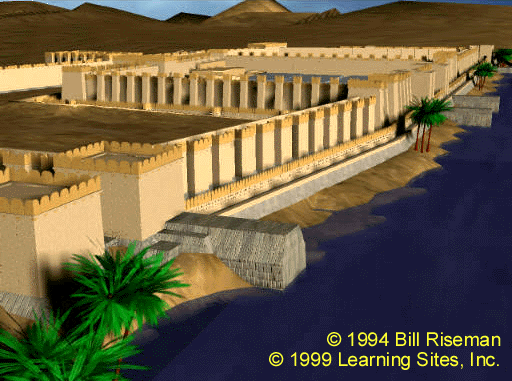 |
MEETING 13 -- November 16, 2010
Internationalism and cosmopolism (Part 1).
At the top of the world: Golden Age of the New Kingdom. At the bottom of the world: Pesky foreigners and their interest in Egypt (the Third Intermediate Period and Late Period).
Discussion: Archaeology of war and power. Is it all about economy or ideology?
Readings for Meeting #13 and #14:
Bard, Kathryn A.: 8. The New Kingdom. In An Introduction to the Archaeology of Ancient Egypt. Blackwell Publishing. 2008. Pp. 207-262.
Bard, Kathryn A.: 9. The Third Intermediate Period and Late Period. In An Introduction to the Archaeology of Ancient Egypt. Blackwell Publishing. 2008. Pp. 263-288.
Redford, Donald B.: Introduction (pp. 1-4). 1. Egyptians and Nubians (pp. 5-10). 2. The Problem of Frontiers (pp. 11-18). In From Slave to Pharaoh. The Black Experience of Ancient Egypt. The John Hopkins University Press. 2004.
Spalinger, Anthony J.: Warfare in Ancient Egypt. In A Companion to the Ancient Near East. Daniel C. Snell, ed. Blackwell Publishing. 2008. Pp. 245-257. |
|
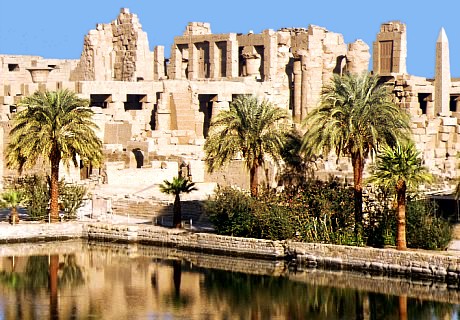 |
MEETING 14 -- November 23, 2010
Internationalism and cosmopolism (Part 2).
At the top of the world: Golden Age of the New Kingdom. At the bottom of the world: Pesky foreigners and their interest in Egypt (the Third Intermediate Period and Late Period).
Discussion: Archaeology of war and power. Is it all about economy or ideology?
Readings for Meeting # 14 – see above #13.
|
|
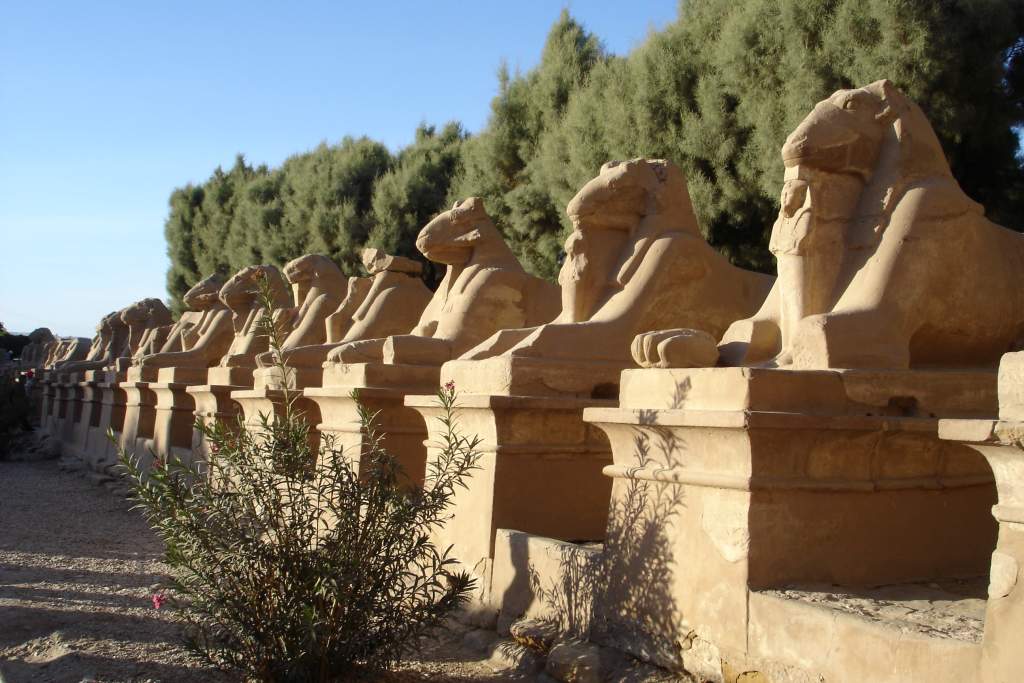 |
MEETING 15 -- November 30, 2010
Walking like an Egyptian…
Surviving, living, and enjoying life. Everyday life and its ups and downs. From diet to fashion; from donkeys to ships.
Discussion: Contextual archaeology meets art history.
Readings for Meeting #15:
Schumann Antelme, Ruth and Stéphane Rossini: Chapter 2. The Sexuality of the Human World. In Sacred Sexuality in Ancient Egypt. The Erotic Secrets of the Forbidden Papyrus. Inner Traditions: Rochester, Vermont. 2001. Pp. 50-68.
Szpakowska, Kasia: 4. The Stuff of Life (pp.64-80). 5. Crafts and Trades (pp.81-101). 6. Learning, Earning, and Leisure (pp.102-121). In Daily Life in Ancient Egypt. Blackwell Publishing. 2008. |
|
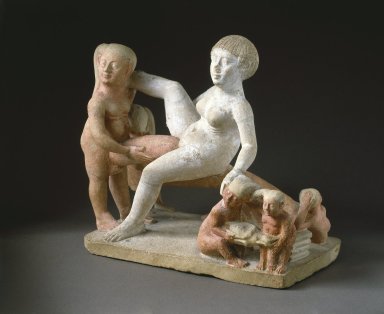 |
MEETING 16 -- December 7, 2010
MEETING 17 -- December 14, 2010
 |
|
 |
 |
FINAL EXAM!!!
Last day to turn in project reports/papers! |
 IMPORTANT!!! IMPORTANT!!!
ADA Statement:
“The University of Utah seeks to provide equal access to its programs, services and activities for people with disabilities. If you will need accommodations in the class, reasonable prior notice needs to be given to the Center for Disability Services, 162 Union Building, 581-5020 (V/TDD). CDS will work with you and the instructor to make arrangements for accommodations.” (www.hr.utah.edu/oeo/ada/guide/faculty)
Faculty Responsibilities:
“All students are expected to maintain professional behavior in the classroom setting, according to the Student Code, spelled out in the Student Handbook. Students have specific rights in the classroom as detailed in Article III of the Code. The Code also specifies proscribed conduct (Article XI) that involves cheating on tests, plagiarism, and/or collusion, as well as fraud, theft, etc. Students should read the Code carefully and know they are responsible for the
content. According to Faculty Rules and Regulations, it is the faculty responsibility to enforce responsible classroom behaviors, and I will do so, beginning with verbal warnings and progressing to dismissal from and class and a failing grade. Students have the right to appeal such action to the Student Behavior Committee.” (www.admin.utah.edu/ppmanual/8/8-12-4.html)
ACADEMIC MISCONDUCT
Please familiarize yourself with the University of Utah CODE OF STUDENT RIGHTS AND RESPONSIBILITIES (“STUDENT CODE”) at www.admin.utah.edu/ppmanual//8/8-10.html
The following is an excerpt from this CODE explaining specific actions, which won’t be tolerated in this class.
“2. “Academic misconduct” includes, but is not limited to, cheating, misrepresenting one's work, inappropriately collaborating, plagiarism, and fabrication or falsification of information, as defined further below. It also includes facilitating academic misconduct by intentionally helping or attempting to help another to commit an act of academic misconduct.
a. “Cheating” involves the unauthorized possession or use of information, materials, notes, study aids, or other devices in any academic exercise, or the unauthorized communication with another person during such an exercise. Common examples of cheating include, but are not limited to, copying from another student's examination, submitting work for an in-class exam that has been prepared in advance, violating rules governing the administration of exams, having another person take an exam, altering one's work after the work has been returned and before resubmitting it, or violating any rules relating to academic conduct of a course or program.
b. Misrepresenting one's work includes, but is not limited to, representing material prepared by another as one's own work, or submitting the same work in more than one course without prior permission of both faculty members.
c. “Plagiarism” means the intentional unacknowledged use or incorporation of any other person's work in, or as a basis for, one's own work offered for academic consideration or credit or for public presentation. Plagiarism includes, but is not limited to, representing as one's own, without attribution, any other individual’s words, phrasing, ideas, sequence of ideas, information or any other mode or content of expression.
d. “Fabrication” or “falsification” includes reporting experiments or measurements or statistical analyses never performed; manipulating or altering data or other manifestations of research to achieve a desired result; falsifying or misrepresenting background information, credentials or other academically relevant information; or selective reporting, including the deliberate suppression of conflicting or unwanted data. It does not include honest error or honest differences in interpretations or judgments of data and/or results.”
The following sanctions will be imposed in this class for a student engaging in academic misconduct:
1. A failing grade for the specific assignment, paper, exam, etc., without possibility to re-write it, re-take it, etc. This academic misconduct will be reported to the Chairman of the Department of Anthropology.
2. The second offense will be sanctioned with a failing grade for the whole course. In such a case, the following rule of the University of Utah CODE OF STUDENT RIGHTS AND RESPONSIBILITIES is applicable and will be followed: “If the faculty member imposes the sanction of a failing grade for the course, the faculty member shall, within ten (10) business days of imposing the sanction, notify in writing, the chair of the student’s home department and the senior vice president for academic affairs or senior vice president for health sciences, as appropriate, of the academic misconduct and the circumstances which the faculty member believes support the imposition of a failing grade.”
3. For more information concerning sanctions for academic misconduct (additional sanctions might be imposed) and your rights and procedures to appeal these sanctions please refer to the aforementioned CODE.
If you need more information and/or explanations please don’t hesitate to contact the instructor.
Ewa
Wasilewska's Home Page
|
